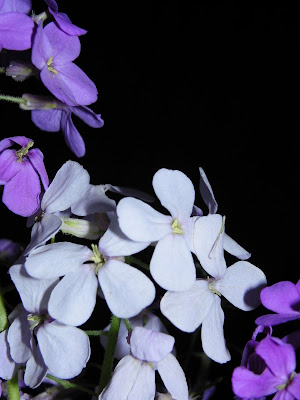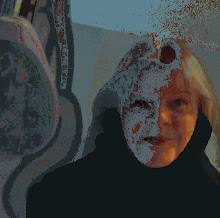
I do not care only about placing a name, or date, in my family record in order to say that I have personally accomplished something. I want to understand what brought that entry into being and how my ancestors paved the way through their hardships and milestones - trying always to better the lives of their children, and in turn, improving conditions for the generations to come.
I want to understand beliefs and fears that were passed down, and dreams and failures through which valuable lessons were learned. I want to have a glimpse of the humor and stubborness that got them through each day, guaranteeing their survival and therefore my eventual existance.
I want to see, in them, a part of me. I want to know their inborn talents, what brought them joy, what sparked their interest. What brought a warmth to their hearts and a smile to their face. I want to understand what angered them, what brought sadness to their lives. I want to recognize, in my heritage, that which is still evident as common family traits, whether they be good or bad.
I want to know of the culture that influenced their reactions, the songs, the poetry, the superstitions, the celebrations that brought meaning to their often destitute lives. I want to have a vision of how my life might have been different if my family had never left their homeland and struck out for distant shores.
I want to be reunited with family members left behind, not only through documents of paper, but through emotions and half-imagined memories. I want to feel as if I've gotten to know them, though I will never have met them. I want to interact with those most like them, and through joining with their present day countrymen, I may one day be reunited with my own living kinsmen.
I want to understand beliefs and fears that were passed down, and dreams and failures through which valuable lessons were learned. I want to have a glimpse of the humor and stubborness that got them through each day, guaranteeing their survival and therefore my eventual existance.
I want to see, in them, a part of me. I want to know their inborn talents, what brought them joy, what sparked their interest. What brought a warmth to their hearts and a smile to their face. I want to understand what angered them, what brought sadness to their lives. I want to recognize, in my heritage, that which is still evident as common family traits, whether they be good or bad.
I want to know of the culture that influenced their reactions, the songs, the poetry, the superstitions, the celebrations that brought meaning to their often destitute lives. I want to have a vision of how my life might have been different if my family had never left their homeland and struck out for distant shores.
I want to be reunited with family members left behind, not only through documents of paper, but through emotions and half-imagined memories. I want to feel as if I've gotten to know them, though I will never have met them. I want to interact with those most like them, and through joining with their present day countrymen, I may one day be reunited with my own living kinsmen.

































